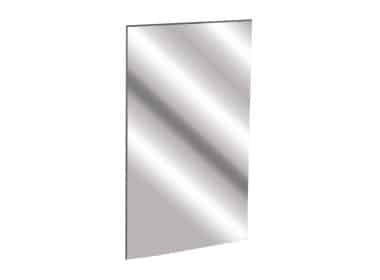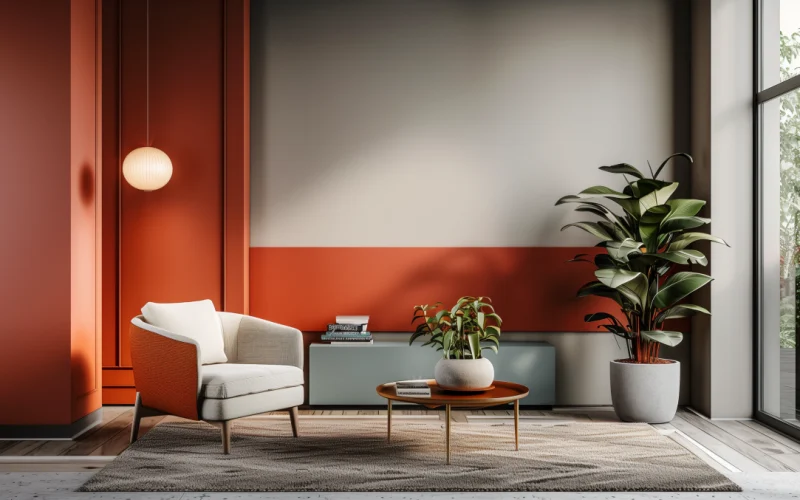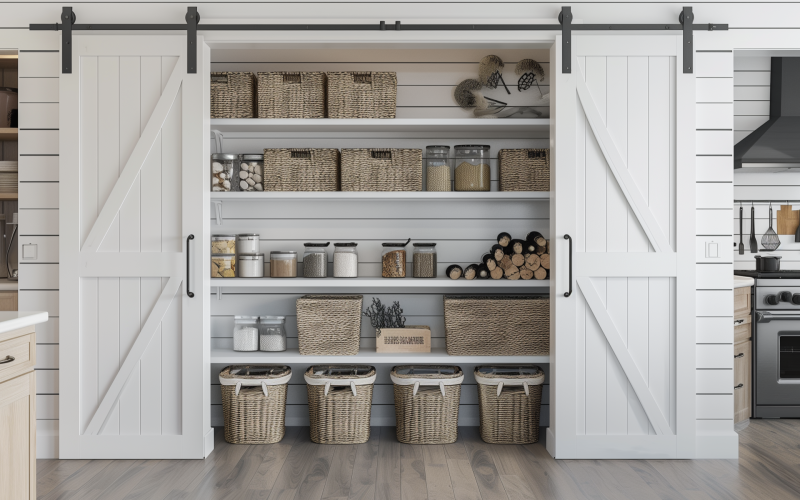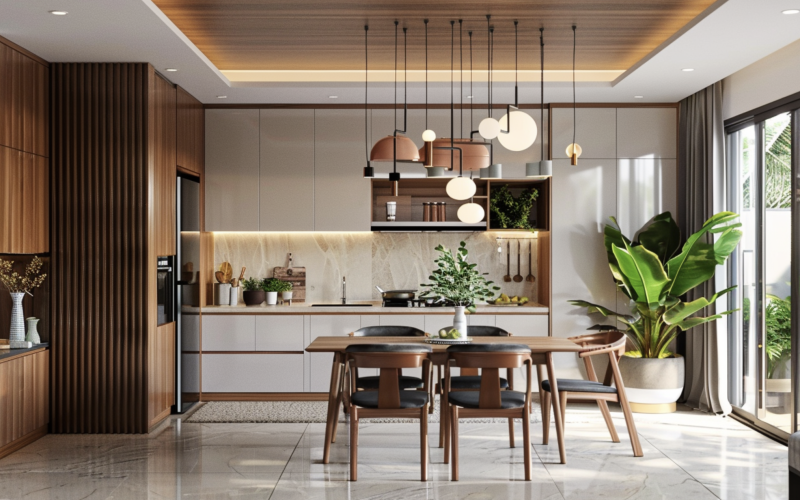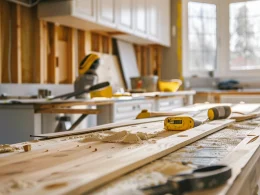Small rooms often feel cramped, leaving homeowners longing for more space. Many consider a bedroom with two-color walls but wonder if it’s worth the effort.
Here’s the good news: two-tone walls can make a room look bigger. This simple painting technique creates an optical illusion that expands your space without moving any walls.
This article explores how two-tone walls can transform your rooms, from selecting the right color combinations to mastering painting techniques.
We’ll dive into the psychology of color and how it affects spatial perception. You’ll learn about vertical and horizontal color splits and which works best for different room shapes.
We’ll also share expert tips on paint finishes and creative ideas to complement your two-tone walls with furniture and decor.
Get ready to discover how two carefully chosen paint colors can give your space a whole new dimension and solve your small room woes.
Do Two-Tone Walls Make a Room Look Bigger?
Two-tone walls are a clever way to create an illusion of space in your home.
Using two colors on your walls can trick the eye into seeing more depth and dimension than exists.
This visual trickery can make even the smallest rooms more open and spacious.
The magic of two-tone walls lies in their ability to draw the eye and create visual interest. This painting technique can make ceilings appear higher and rooms feel wider when done correctly.
It’s a simple yet effective way to transform your space without requiring major renovations or structural changes.
How It Works
The effectiveness of two-tone walls in making a room look bigger stems from basic principles of color psychology and visual perception. Here’s how it works:
- Contrasting colors draw the eye upwards: When you use a darker color on the bottom portion of the wall and a lighter shade on the top, the eye naturally moves upward. This vertical movement creates an illusion of height, making your ceilings appear higher than they are.
- Lighter shades on top expand perceived height: Light colors reflect more light, making spaces feel more open and airy. By placing lighter shades on the upper portion of your walls, you’re visually pushing the ceiling up, expanding the perceived height of the room.
- Creating depth: The contrast between the two colors adds depth to your walls. This depth helps to break up the monotony of a single-colored wall, which can sometimes make a room feel smaller and more closed in.
Key Principles of Two-Tone Wall Design
Horizontal Two-Tone Walls
Horizontal two-tone walls are perhaps the most common and effective way to make a room look bigger.
This technique involves dividing the wall horizontally, with different colors above and below the dividing line.
- Light color on top, dark color on bottom: This is the golden rule of horizontal two-tone walls. You’re visually lifting the ceiling by placing the lighter color on top. The darker color grounds the space and provides a nice contrast.
- Creates the effect of higher ceilings: The contrast between the light upper portion and the darker lower portion draws the eye upward, creating the illusion of more vertical space.
Vertical Two-Tone Walls
While less common, vertical two-tone walls can be just as effective in making a room look bigger, especially in certain types of spaces.
- Divides space vertically, enhancing height perception: You draw the eye up and down by creating a vertical divide, making the room feel taller.
- Ideal for rooms with architectural features: This technique works particularly well in rooms with interesting architectural elements like nooks, fireplaces, or built-in shelving. The second color can highlight these features.
- Can make narrow rooms feel wider: In long, narrow rooms, using a darker color on one of the longer walls can create the illusion of width, balancing out the room’s proportions.
Choosing the Right Colors
Light and Neutral Tones
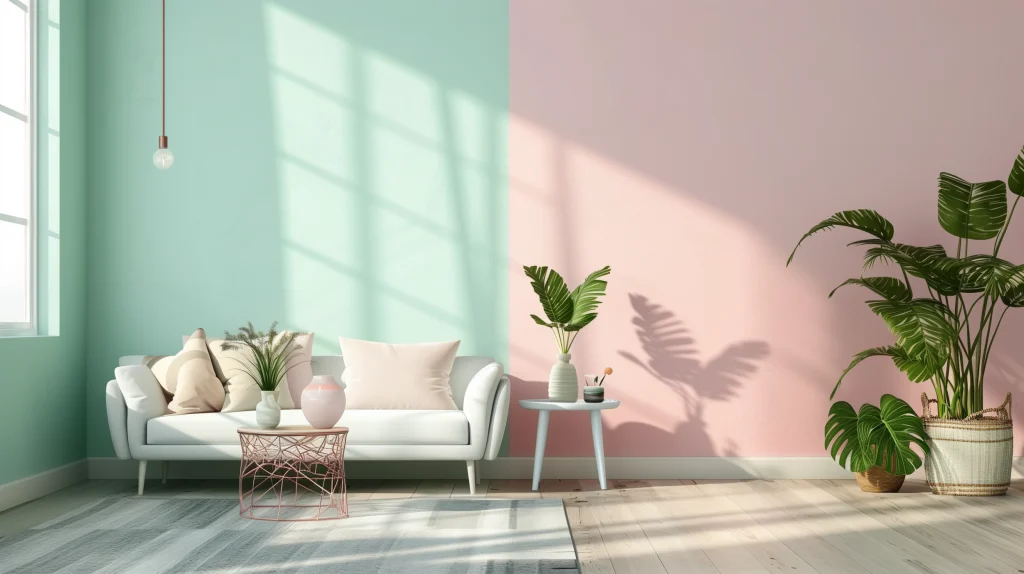
Light and neutral tones are often the go-to choice for making a room look bigger. These colors reflect natural light, making the space feel open and airy.
Light colors bounce around the room, brightening the space and making it feel larger. This is especially useful in rooms with limited natural light.
Soft greens, blues, and light greys are excellent choices. These calming colors can make a space more open without being too stark or clinical.
You can create depth using slightly different shades, even within light and neutral tones. For example, you might use light grey on top and a slightly darker grey on the bottom.
Bold and Contrasting Colors
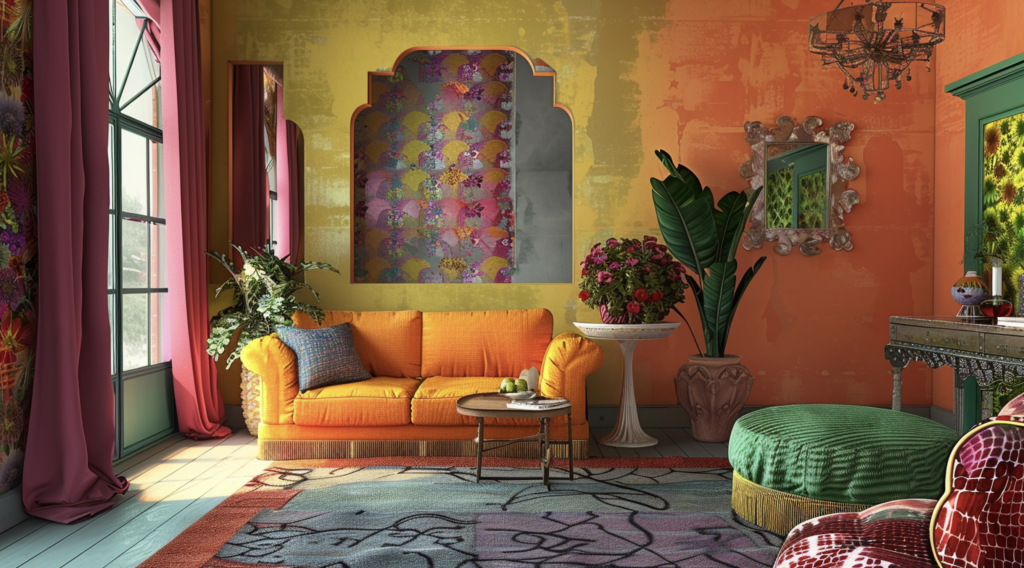
While light colors are often recommended for small spaces, don’t be afraid to experiment with bold and contrasting colors.
They can add visual interest and depth to your room when used correctly.
Bold colors can create a focal point in the room, drawing the eye and creating the illusion of depth.
Bold yellows paired with whites can create a sunny, open feel. Deep blues or greens paired with light neutrals can add sophistication while maintaining an open feel.
While bold colors can be effective, they should be used judiciously in small spaces. Too much bold color can overwhelm the room and make it feel smaller.
Practical Tips for Application
Preparation
Proper preparation is key to achieving a professional-looking two-tone wall effect.
Use a level to ensure your line is perfectly straight. A crooked dividing line can ruin the effect and make the room feel off-balance.
High-quality painter’s tape creates a crisp, clean line between your two colors. Press the edge of the tape firmly to prevent paint from seeping underneath.
Ensure your walls are clean and free of dust or grease. If you’re painting over a dark or glossy surface, use a primer to ensure good coverage and adhesion of your new paint.
Painting Technique
The way you apply your paint can make a big difference in the final result.
Please start with the lighter color, as it’s easier to cover the light with dark than vice versa. Allow the paint to dry completely before moving on to the second color.
Use a brush for edges and a roller for larger areas. Take your time to ensure even coverage and clean lines.
Carefully remove the painter’s tape while the paint is still slightly wet to avoid peeling off dried paint with the tape.
Once everything is dry, examine your work in good light and touch up any imperfections.
Conclusion
Two-tone walls can make a room look bigger, offering a smart solution for homeowners struggling with small spaces.
You can transform your rooms without costly renovations by strategically using color to create visual depth and height.
Whether you opt for horizontal splits to raise ceilings or vertical divisions to enhance width, the key lies in thoughtful color selection and precise application.
Remember, light and neutral tones work wonders, but don’t shy away from bold contrasts if they suit your style.
As you embark on your two-tone wall project, take time to prepare properly and follow the painting techniques we’ve outlined.
With these tips, you’re well-equipped to give your rooms a spacious new look. Why not start planning your two-tone wall makeover today? Your newly expansive-feeling space awaits!




